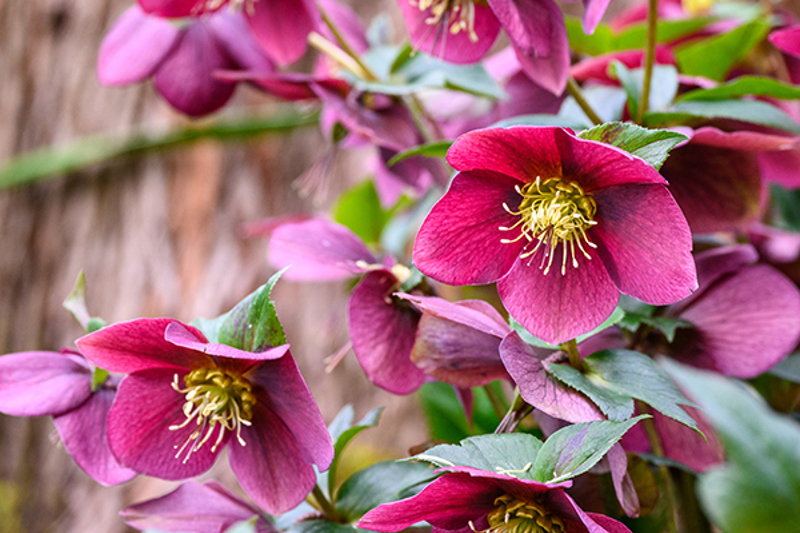Yates Account
Join now
Create a Yates account today!
Sign up to join the Yates Garden Club for monthly e-mails packed with seasonal inspiration, tips for success & exclusive promotions.
Plus if you’re a Garden Club member you can take part in the Yates Growing Community - a blog to share successes, get advice & win prizes in fun challenges along the way!

Forgot password
Enter the email address associated with your account, and we'll email you a new password.

Despite the Winter Rose name, hellebores aren't related to the rose family at all. In fact, they're members of Ranunculaceae, the buttercup family.
Hellebores were associated in Mediaeval folklore with witches; it's easy to see why when you see their mysterious and moody blooms gleaming from the shadows - they're a bewitching display!
They're a delight during the cooler months of the year, putting on a prolific display of large, bell shaped flowers right throughout winter and into early spring.
How to grow hellebores in a garden
- Choose a spot in the garden with semi-shade to full shade and that gets protection from the harsh afternoon sun. Enrich the soil with Yates Thrive Natural Blood & Bone with Seaweed.
- Dig the planting hole twice as wide and to the same depth as the root-ball. Remove the shrub from the container, gently tease the roots.
- Position in hole and backfill with soil, gently firming down. Form a raised or doughnut-shaped ring of soil around the outer edge of the plant's root zone. This helps keep water where it's needed.
- After planting, water in well with diluted Yates Thrive Natural Seaweed Tonic to settle the soil around the roots and help reduce transplant shock.
- Mulch around the base with organic mulch like bark chips, woodchip or pea straw, keeping it away from the main stem.
- Feed with Yates Thrive Rose & Flower Granular Plant Food. TIP: For an added boost apply Yates Thrive Roses & Flower Liquid Plant Food.

How to grow hellebores in a pot
- Choose a pot at least twice the size as the selected plant. Position in semi-shade to full shade and fill with quality potting mix, such as Yates Premium Potting Mix.
- Remove the shrub from the container, gently tease the roots.
- Position in hole and backfill with soil, gently firming down. Water in well with diluted Yates Thrive Natural Seaweed Tonic.
- Mulch around the base with organic mulch like bark chips, woodchip or pea straw, keeping it away from the main stem.
- Feed every 1-2 weeks with Yates Thrive Roses & Flower Liquid Plant Food. TIP: For an added boost apply Yates Thrive Natural Fish & Seaweed+ Plant Food Concentrate.
Growing tips
- Hellebores can be grown from seed and will easily self seed in your garden bed.
- To improve germination if planting out, mix the seeds through some peat moss and leave it in the freezer for a couple of weeks before sowing lightly, covering the seeds, in some Yates Black Magic Seed Raising Mix and water well.
- All parts of the Hellebore plant are poisonous. Take extra precautions if children are in the garden around this plant.
- After flowering, give the bushes a nice prune to encourage new growth.
- Hellebores are great for planting under trees or canopies as they can handle the competition for nutrients.
















Share
Share this article on social media